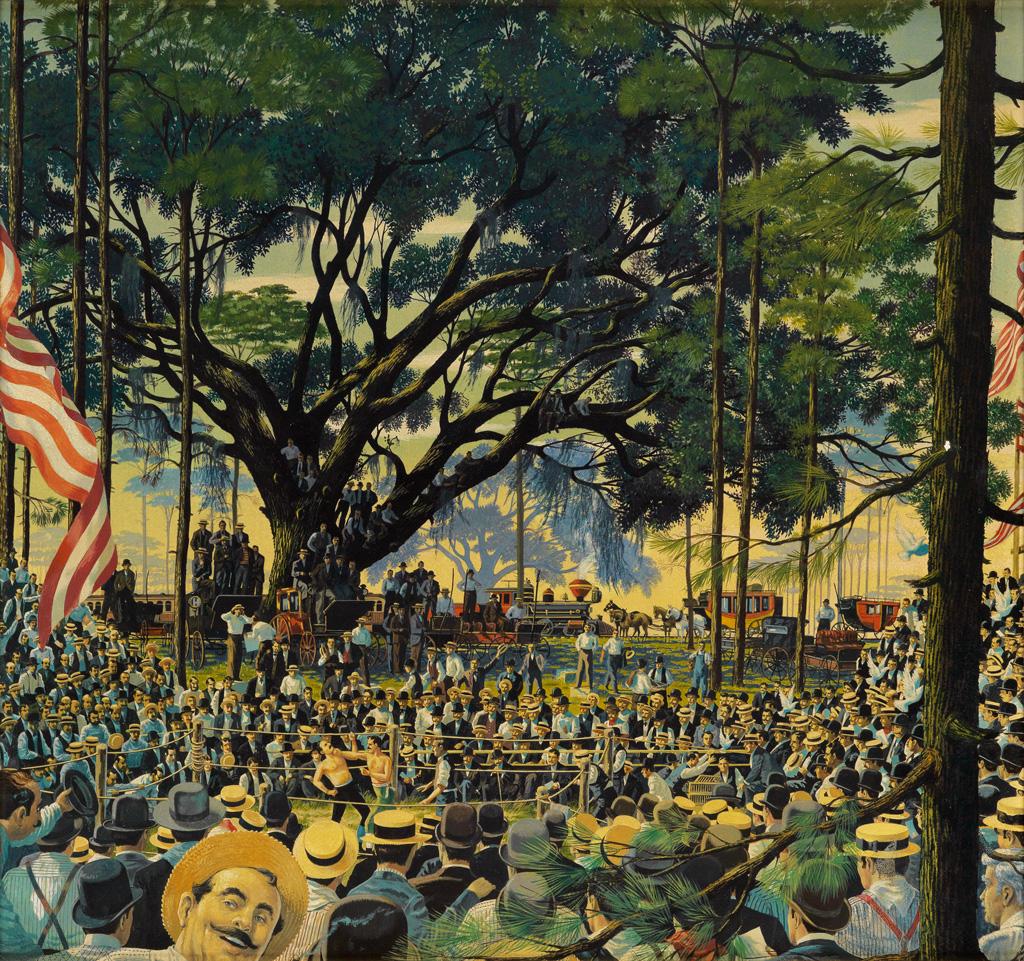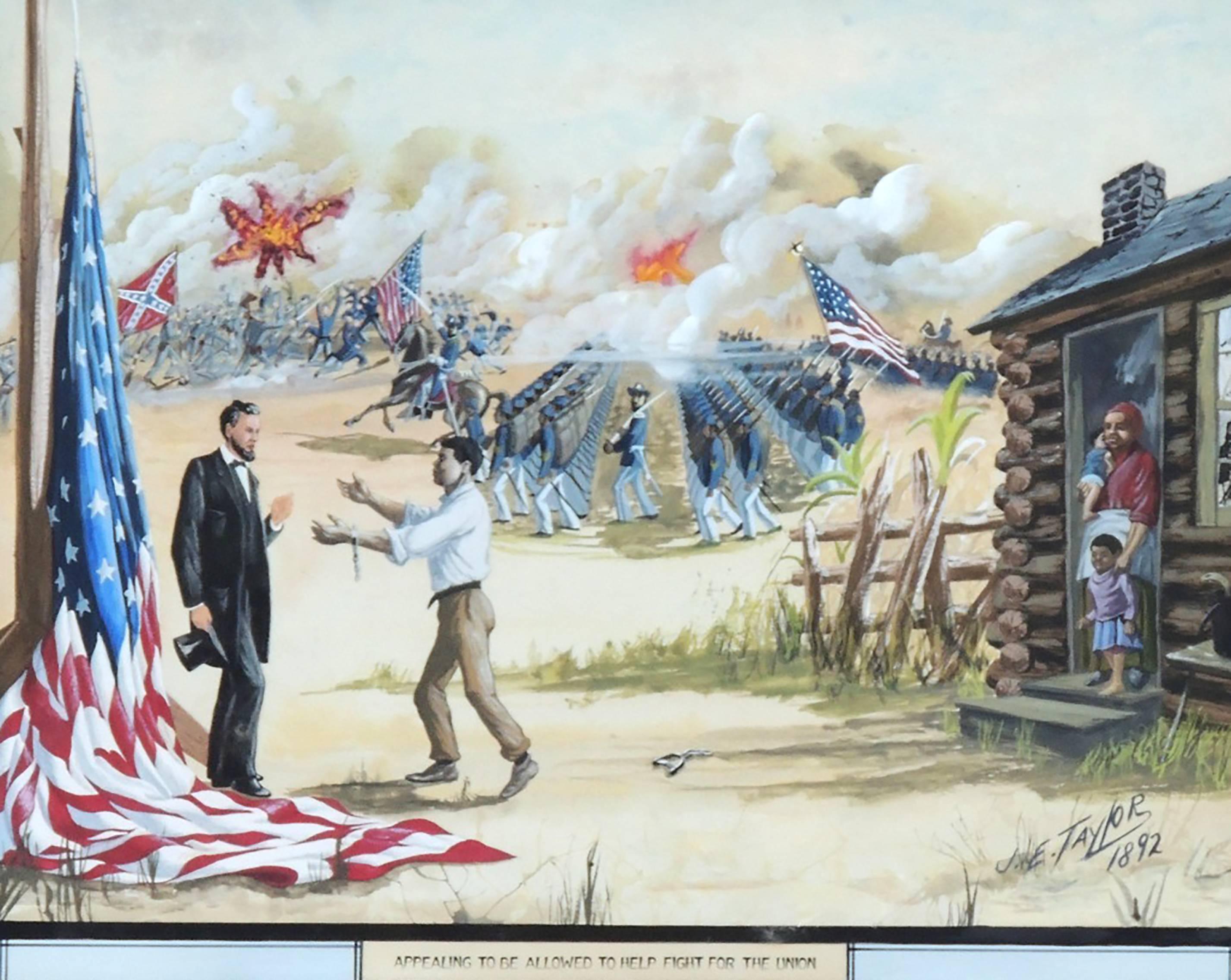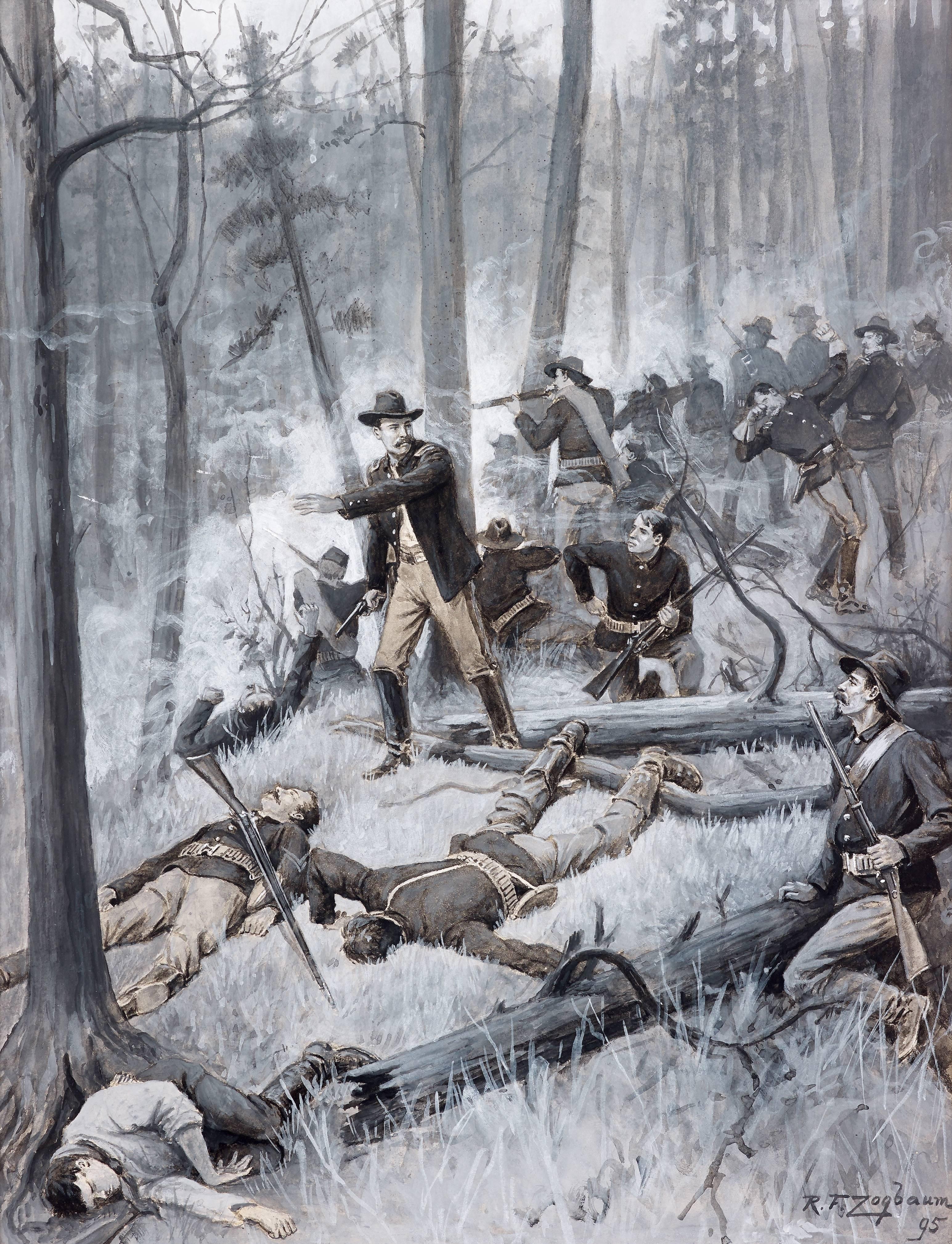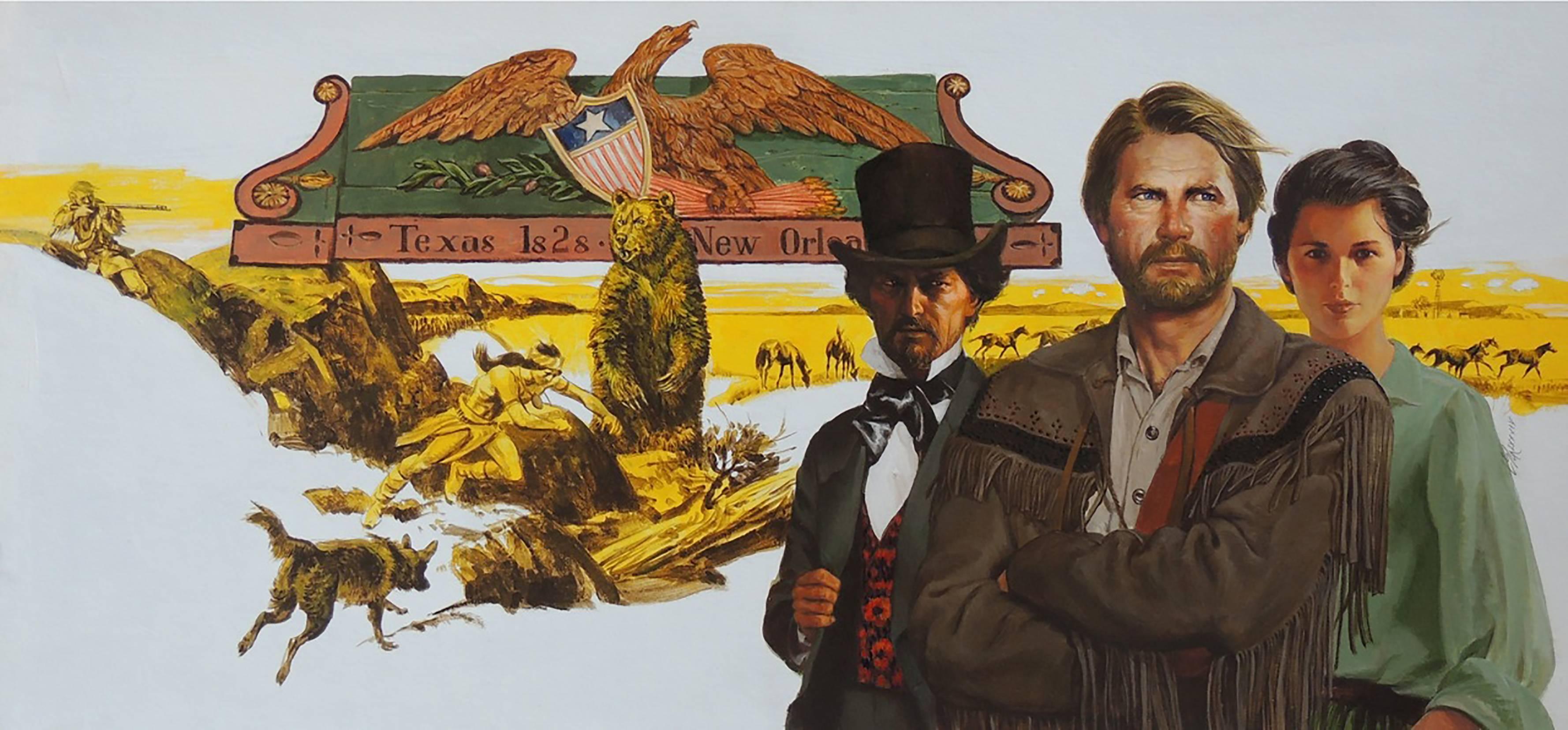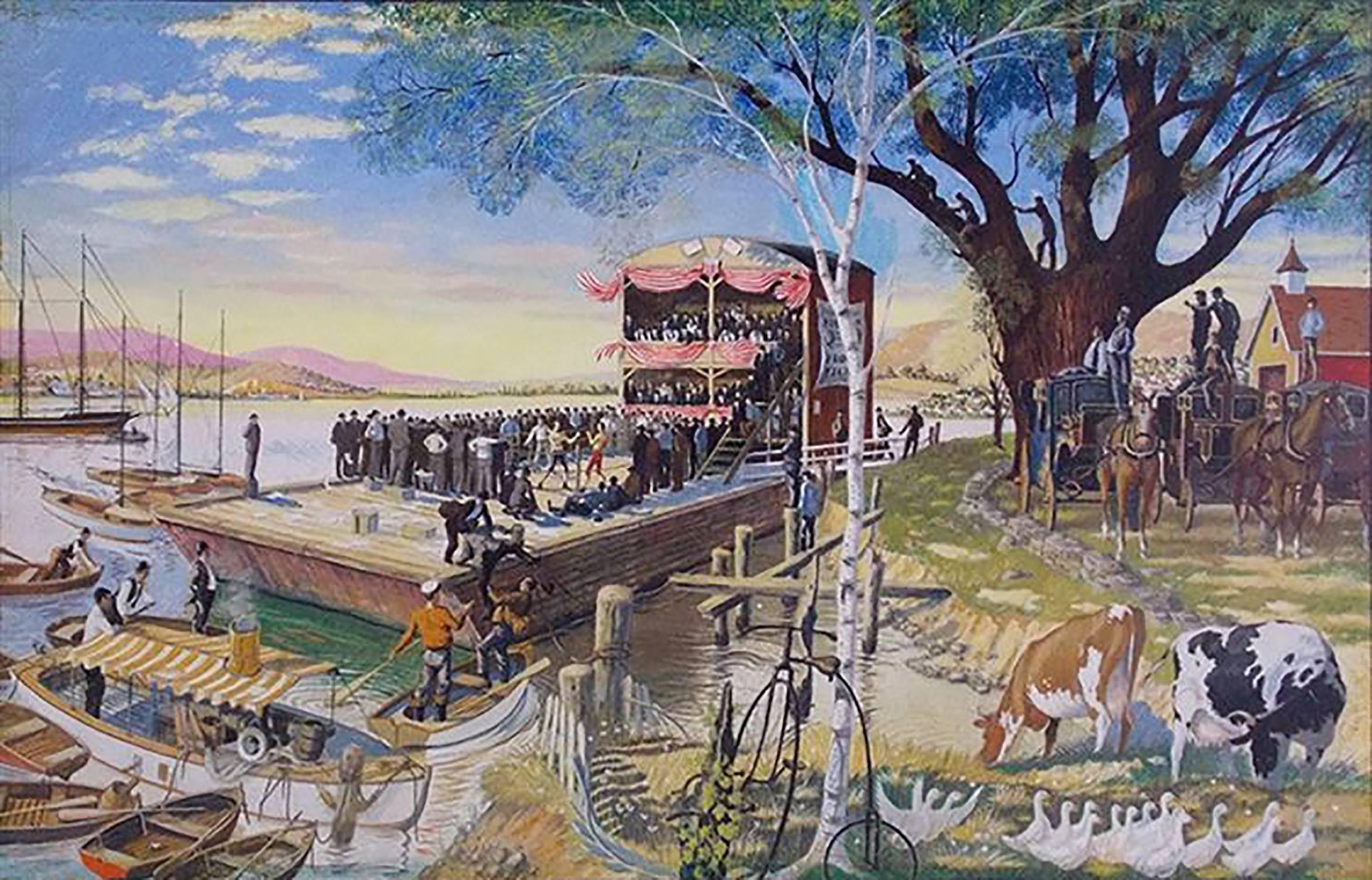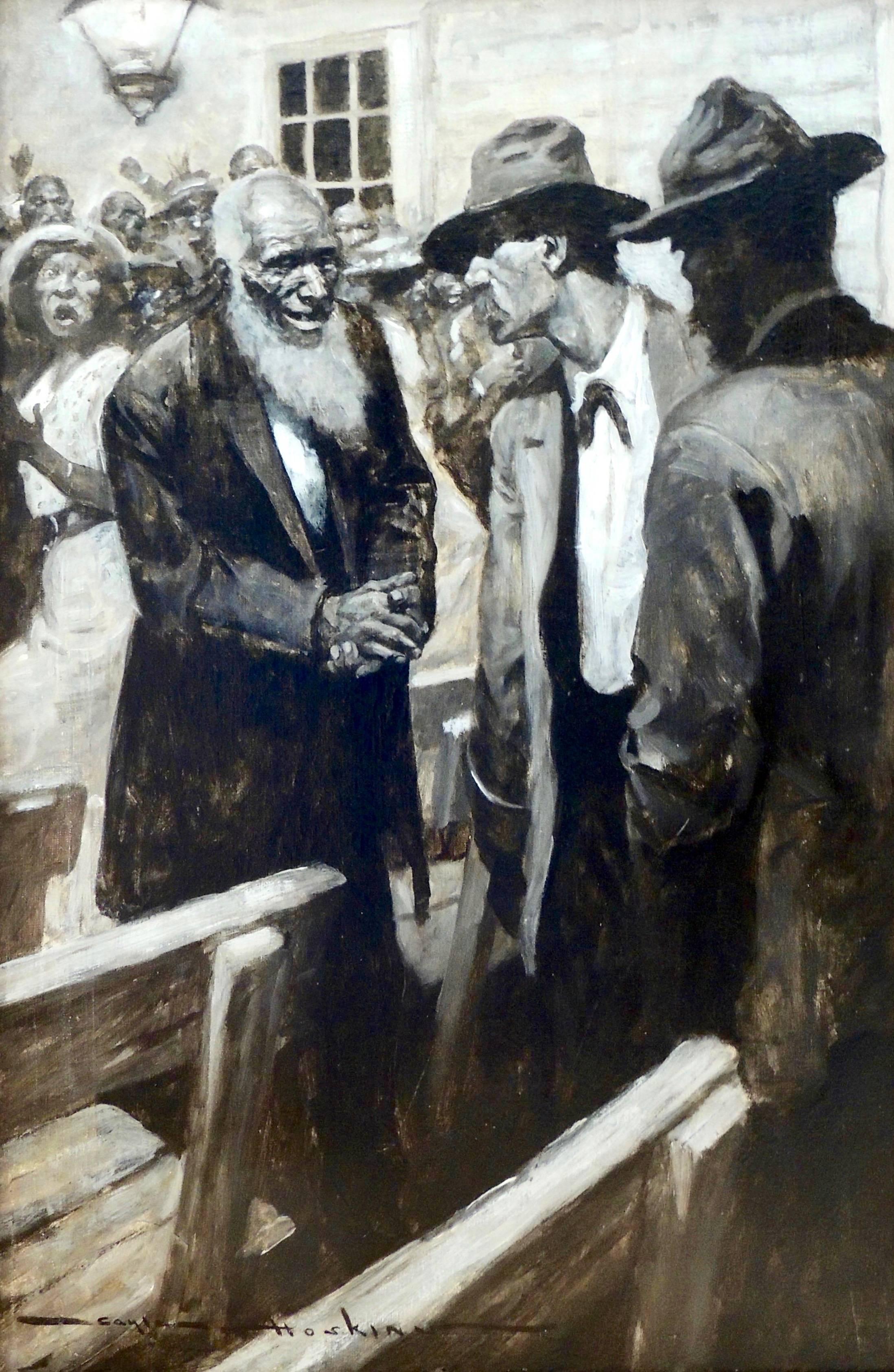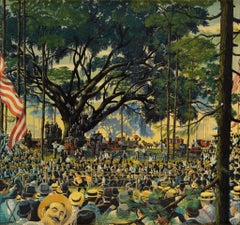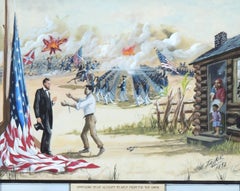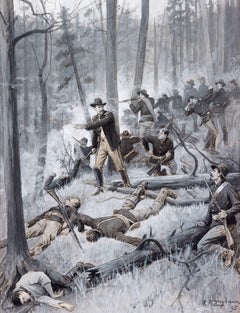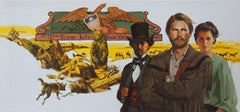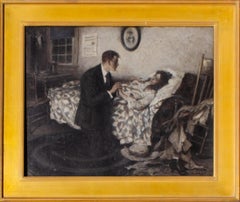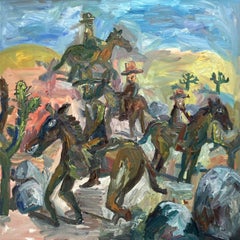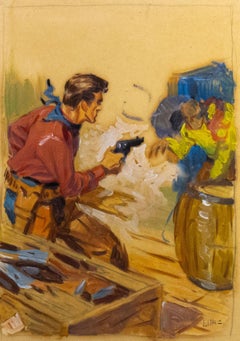Items Similar to "The Sullivan-Kilrain Fight" Story Illustration
Want more images or videos?
Request additional images or videos from the seller
1 of 6
J. Graham Kaye"The Sullivan-Kilrain Fight" Story IllustrationUndated
Undated
$7,500
£5,655.74
€6,541.14
CA$10,522.46
A$11,696.37
CHF 6,130.99
MX$142,840.95
NOK 76,541.81
SEK 72,011.57
DKK 48,821.17
About the Item
Date: Undated
Medium: Oil on Masonite
Signature: Signed Lower Left
An undated story illustration depicting the 1889 bare-knuckle heavyweight title fight in Richburg, Mississippi, which Sullivan won, having lasted 75 rounds.
- Creator:J. Graham Kaye (American)
- Creation Year:Undated
- Dimensions:Height: 19 in (48.26 cm)Width: 20.25 in (51.44 cm)
- Medium:
- Period:
- Condition:
- Gallery Location:Fort Washington, PA
- Reference Number:Seller: 32751stDibs: LU38431917363
About the Seller
5.0
Recognized Seller
These prestigious sellers are industry leaders and represent the highest echelon for item quality and design.
Platinum Seller
Premium sellers with a 4.7+ rating and 24-hour response times
Established in 1995
1stDibs seller since 2016
134 sales on 1stDibs
Typical response time: 1 hour
- ShippingRetrieving quote...Shipping from: Fort Washington, PA
- Return Policy
Authenticity Guarantee
In the unlikely event there’s an issue with an item’s authenticity, contact us within 1 year for a full refund. DetailsMoney-Back Guarantee
If your item is not as described, is damaged in transit, or does not arrive, contact us within 7 days for a full refund. Details24-Hour Cancellation
You have a 24-hour grace period in which to reconsider your purchase, with no questions asked.Vetted Professional Sellers
Our world-class sellers must adhere to strict standards for service and quality, maintaining the integrity of our listings.Price-Match Guarantee
If you find that a seller listed the same item for a lower price elsewhere, we’ll match it.Trusted Global Delivery
Our best-in-class carrier network provides specialized shipping options worldwide, including custom delivery.More From This Seller
View All"The Sullivan-Kilrain Fight" Story Illustration
Located in Fort Washington, PA
An undated story illustration depicting the 1889 bare-knuckle heavyweight title fight in Richburg, Mississippi, which Sullivan won, having lasted 75 rounds.
Category
20th Century More Art
Materials
Masonite, Oil
Appealing To Be Allowed To Help Fight For The Union
By James Earl Taylor
Located in Fort Washington, PA
Medium: Gouache
Signature: Signed Lower Right
a slave with shackles on the ground behind him appealing to Abraham Lincoln with the Civil War battle s...
Category
Late 19th Century Figurative Paintings
Materials
Gouache
Battle of the Big Hole, Magazine Cover
By Rufus Zogbaum
Located in Fort Washington, PA
Approximate Date: 1895
Medium: Gouache on paper laid to card
Signature: Signed and dated 'R.F. Zogbaum/ 95' bottom right
Size: 18 x 13 3/4 in.
Harper's Weekly: A Journal of Civilization, New York, December 28, 1895, vol. XXXIX, no. 2036, (cover illustration).
The present painting represents a battle fought August 9 and 10, 1877, between the United States troops and Chief Joseph...
Category
1890s Figurative Paintings
Materials
Gouache, Laid Paper
Quest of the Hawk
By Louis S. Glanzman
Located in Fort Washington, PA
Medium: Acrylic on Board
Dimensions: 17.50" x 17.25"
Signature: Signed
Category
Mid-20th Century Figurative Paintings
Materials
Paint
Crowd Watching the Fight
By J. Graham Kaye
Located in Fort Washington, PA
Medium: Gouache
Dimensions: 14.50" x 22.50"
Signature: Signed Lower Right
Category
20th Century Landscape Paintings
Materials
Gouache
Illustration for 'The Tangle in Bigamies'
By Gayle Porter Hoskins
Located in Fort Washington, PA
Date: 1914
Medium: Oil on Canvas
Dimensions: 27.00" x 18.00"
Signature: Signed Lower Left
lllustration depicting a church scene. Signed lower left. Illustrative notes on back. Canva...
Category
1910s Figurative Paintings
Materials
Canvas, Oil
You May Also Like
William Fisher Classic American Illustration on Canvas
Located in New York, NY
William Fisher (American, 1891-1985)
Untitled, 20th Century
Oil on canvas/illustration
23 3/4 x 29 3/4 in.
Framed: 31 x 37 1/4 x 1 in.
Signed lower right: William Fisher
William Fis...
Category
20th Century American Modern Figurative Paintings
Materials
Canvas, Oil
The big country, Painting, Oil on Canvas
By John Kilduff
Located in Yardley, PA
I have been watching a lot of westerns on TV lately. Gunsmoke and The Rifleman. This painting is based on a scene from the movie The big country. :: Painting :: Americana :: This pie...
Category
2010s Other Art Style Paintings
Materials
Oil
Untitled
Located in New York, NY
Untitled
Signed, l.r.
Oil on paper
16 x 13 inches (40.6 x 33 cm), framed
10 x 7.5 inches (25.4 x 19.1 cm), image
This work is offered by CLAMP in New York City.
Category
1950s Contemporary Paintings
Materials
Paper, Oil
Wuxtry! [Extra!]
By Albert Abramovitz
Located in New York, NY
Albert Abramovitz (1879-1963), Wuxtry! [Extra?!], linocut in colors, c. 1936, signed in pencil lower right and titled lower center [also initialed in the plate]. In very good conditi...
Category
1930s American Realist Figurative Prints
Materials
Linocut
Protest Revolt and Uprising illustration
By Daniel Maffia
Located in Miami, FL
This work is a quintessential protest statement piece depicting an angry mob brandishing powerful fits in the air in gestures of revolt
Signed lower right.
Daniel Maffia has done a ...
Category
1980s American Modern Figurative Paintings
Materials
Mixed Media, Gouache
Unwelcome Interruption, Oil Painting by A. Raymond Katz 1935
By Alexander Raymond Katz
Located in Long Island City, NY
Artist: Alexander Raymond Katz, Hungarian / American (1895 - 1974)
Title: Unwelcome Interruption
Year: circa 1935
Medium: Oil on Canvas, signed and titled verso
Size: 16 x 20 in. (40...
Category
1930s American Modern Figurative Paintings
Materials
Oil
